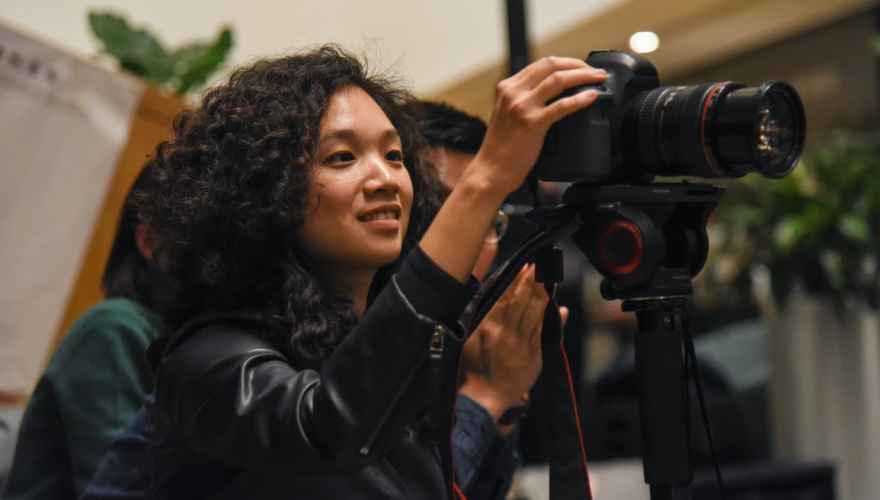Harris Beber, CMO of video platform Vimeo, discussed his company’s eventful year during his interview for the On Brand video series. A Salesforce customer, Vimeo launched Vimeo Create, a short-form video editor to help businesses make social media videos, in February 2020. It was one of the biggest products in the company’s history. But when the pandemic hit just a few weeks later, and “the world pretty much shut down” (as Beber put it), Vimeo’s marketing team had to rethink the video marketing strategy that they had been planning for months.
To capture this moment in history, Salesforce sponsored On Brand, a video series produced by Muse by Clio, a news site focused on creativity in advertising. The series featured conversations with chief marketing officers (CMOs) like Beber and other top brand marketers across several industries. They speak at length about the value of bold ideas, their own successes and challenges, and navigating COVID-19.
These interview excerpts take you inside one of Vimeo’s recent brand initiatives launched in the wake of the pandemic – just as small businesses were shutting their doors and creative productions were canceled. Stories in Place, a grant-funded video series, follows the stories of eight small businesses adapting to a world sheltering in place. It’s a great story of a brand tackling a challenge head-on and creating marketing content that helps the business community. It’s also just one example of why Beber received a CMO Content Engagement Award from The CMO Club in November 2020. He was also included on Forbes’ CMO Next 2021 list.
Stories in Place was so successful that Vimeo is now partnering with Mailchimp to launch a second installment of the series, this time featuring Black filmmakers and Black-owned small businesses.
This interview with Harris Beber has been edited for length and clarity.
On Vimeo’s shift in focus at the start of COVID-19
We came to realize it wasn’t appropriate to create content about, “How do you grow your business and build your brand?” when so many of those small businesses didn’t care about that. They were worried about, “How am I going to survive? How am I going to keep my doors open?”
That little seed of a thought was inspiration for our first-ever grant-funded video series. At the other side of our community are creative professionals, the people making the videos. Their worlds were deeply impacted, too. Every production in the world was shut down because of quarantine.
So we said, “How can we serve both of these audiences, support them in ways they both need right now, and put a positive message out into the world?”
How the Stories in Place video series came together
Vimeo’s brand strategy has always been rooted in our community and supporting their incredible ability to use video to tell stories and communicate. When we decided on a grant project — one that would give grants to both filmmakers and businesses — we opened up pitches to Vimeo Staff Picked filmmakers. We wanted to hear about their favorite small businesses, how they were adapting during the first few months of the pandemic, and how they planned to capture these stories visually.
We ended up selecting eight stories that we felt were a real diverse representation of what was pitched — both in how the filmmakers would craft the videos and who the videos were featuring. In the end, the filmmakers had just 12 days to make their film, from start to finish. Which is amazing because what they came back with was incredibly moving and incredibly high caliber; it really captured the moment that people were experiencing.
It was certainly a scrappy project — one that required creative, fast thinking from everyone involved —but the team was very proud to be able to support Stories in Place, and the creators and businesses behind them. (You can see one of the videos below.)
On the impact of the series for small businesses
One of my favorite heroes is trailblazing politician Shirley Chisholm (the first African-American congresswoman). She famously said, “If you don’t have a seat at the table, bring a folding chair.” But I would argue that these days, she would not have been happy with a folding chair. She would have demanded a seat.
These small and medium business owners are building their own table, and in so doing are creating opportunity for others in their community. It is incumbent upon us to support them.
On the value of data for making an impact
No matter why you’re making a video, you want it to have an impact. And impact could mean lots of things. It could be delivering a message that’s really compelling and moving. It could be driving traffic to your website. It could be getting people to register for an event. Knowing what works and where your audience is is incredibly important.
Ultimately, if you invest all your time and resources and creative thought into making something, but it doesn’t reach the audience because they’ve scrolled past it, then your message is lost. You have three seconds to capture someone’s attention. You want to get the maximum impact from your efforts. And to do that, data could be incredibly valuable.
- Read 4 Common Beliefs About the Future of Advertising – And Why They’re Wrong
- Pull more inspiration from 6 CMO Quotes To Motivate Marketers in 2021




























